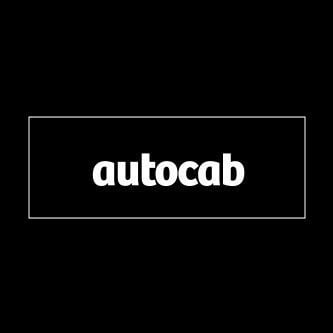Description

InDrive

TaxiCaller
Comprehensive Overview: InDrive vs TaxiCaller
Certainly! Let's break down the overview of InDrive and TaxiCaller, focusing on their primary functions, target markets, market share and user base, and key differentiating factors.
a) Primary Functions and Target Markets
InDrive
- Primary Functions: InDrive is a ride-hailing application that operates on a unique model allowing passengers and drivers to negotiate fares directly. Instead of being presented with a fixed price, users suggest a fare they are willing to pay, and nearby drivers can choose to accept, reject, or make a counteroffer.
- Target Markets: Initially launched in Russia, InDrive (formerly known as inDriver) has expanded to various international markets, particularly in developing countries across Latin America, Africa, and Southeast Asia. The app targets users in areas where conventional ride-hailing models may not be as accessible or popular, focusing on secondary cities and regions with inadequate public transportation infrastructure.
TaxiCaller
- Primary Functions: TaxiCaller provides cloud-based taxi dispatch software designed for taxi companies, private hire, and chauffeur services. It allows for efficient management of booking, dispatching, and tracking of vehicles in real-time.
- Target Markets: TaxiCaller is aimed primarily at taxi companies and fleet operators looking to digitize their operations. Its markets include North America, Europe, and other regions where established taxi services are looking to modernize operations and enhance competitiveness with ride-hailing services.
b) Market Share and User Base
InDrive
- Market Share: InDrive has gained significant traction in emerging markets due to its unique negotiation model. However, it faces stiff competition from larger players like Uber and Bolt in Western markets. Its adoption varies by region, often being more popular in cities with less presence of major ride-hailing platforms.
- User Base: InDrive boasts millions of users worldwide, with its primary user base concentrated in the regions where it has the strongest presence, such as parts of Latin America, South Asia, and Africa.
TaxiCaller
- Market Share: As a software provider rather than a direct ride-hailing service, TaxiCaller's market share is measured more in terms of adoption by taxi companies than individual riders. It has penetrated various markets globally, but it doesn’t compete directly with ride-hailing apps for consumers.
- User Base: TaxiCaller serves numerous taxi companies and fleet operators worldwide, providing services to thousands of vehicles and enabling these operators to offer app-based booking to millions of end-users indirectly.
c) Key Differentiating Factors
-
Service Model
- InDrive: Operates a peer-to-peer model emphasizing direct fare negotiations between drivers and passengers, offering flexibility in pricing and appeals to negotiations-sensitive markets.
- TaxiCaller: Provides a software as a service (SaaS) platform for existing taxi businesses, focusing on enhancing traditional taxi operations through technology.
-
User Engagement
- InDrive: Direct engagement with end-users (passengers and drivers) focusing on the ride-hailing market, with an app developed for mass-market use.
- TaxiCaller: Engagement with business clients (taxi companies) for backend operations, offering a comprehensive dispatch and fleet management solution.
-
Geographic Focus
- InDrive: Strong focus on emerging markets with tailored strategies for regions lacking robust transportation infrastructure.
- TaxiCaller: Global focus on modernizing established taxi economies, providing technology solutions rather than a direct consumer service.
-
Pricing Strategy
- InDrive: Unique negotiation-based pricing, allowing flexible and potentially lower-cost rides, which distinguishes it from competitors with fixed pricing models.
- TaxiCaller: Does not set pricing for end-users, as it is not a direct service provider; pricing for users is determined by the taxi operators using their software.
In summary, while InDrive and TaxiCaller both operate in the transportation domain, they cater to different aspects of the market—inDrive to direct consumers in emerging markets and TaxiCaller to business clients seeking technological solutions for taxi operations.
Contact Info

Year founded :
2020
Not Available
Not Available
Russia
http://www.linkedin.com/company/indrive-tech

Year founded :
2011
+46 8 559 219 50
Not Available
Sweden
http://www.linkedin.com/company/taxicaller
Feature Similarity Breakdown: InDrive, TaxiCaller
When comparing InDrive and TaxiCaller, both of which are platforms designed to facilitate ride-hailing and taxi dispatch services, it's important to analyze their core features, user interfaces, and unique attributes. Here's a breakdown of their similarities and differences:
a) Core Features in Common
-
Ride Request Functionality:
- Both platforms allow users to request rides from a smartphone application, connecting passengers with drivers in real-time.
-
Driver and Vehicle Information:
- Users receive details about their driver, such as name, vehicle type, and license plate number, which helps ensure safety and improve ride-sharing transparency.
-
GPS and Navigation Integration:
- GPS integration is essential for tracking the driver's location, guiding routes, and estimating arrival times.
-
Payment Options:
- Each app supports multiple payment methods, including cash and digital payments, to accommodate various user preferences.
-
Rating and Feedback System:
- Users can rate their experience and provide feedback after a ride, which helps maintain service quality and accountability.
-
Ride History:
- Both apps maintain a history of users' rides, allowing them to review past trips and receipts.
b) User Interface Comparison
-
InDrive:
- InDrive is known for a user-friendly interface with a focus on simplicity, displaying ride options and estimated pricing clearly. The interface includes straightforward navigation allowing users to see driver locations and communicate easily.
-
TaxiCaller:
- TaxiCaller's user interface is designed mainly with flexibility for businesses in mind. It allows for custom branding and is often more tailored to the specific needs of the taxi companies using the platform. It may offer additional features aimed at dispatch operators, providing more detailed views of fleet management.
Both interfaces prioritize ease of use and accessibility, but they might feel differently catered depending on whether the end-user is a customer or a taxi dispatcher.
c) Unique Features
-
InDrive:
- Negotiable Fares: A key feature that sets InDrive apart is the ability for passengers and drivers to negotiate fares within the app. This feature allows for a more personalized and potentially cost-effective ride experience.
- Peer-to-Peer Focus: InDrive emphasizes peer-to-peer interactions, encouraging direct communication between drivers and passengers to agree on terms, including pickup points and ride details.
-
TaxiCaller:
- Custom Solutions for Taxi Companies: TaxiCaller provides bespoke solutions and customization options that can cater specifically to the needs of taxi companies. This includes versatile dispatch panel features that suit fleets of different scales.
- Advanced Dispatching Tools: The platform offers advanced capabilities such as automated dispatching, zone prioritization, and reporting tools that can significantly enhance operations for traditional taxi services or enterprises.
In summary, while InDrive and TaxiCaller share several core functionalities essential for ride-hailing services, they cater to slightly different audiences and operational needs. InDrive focuses on user-driven features like fare negotiation, while TaxiCaller offers comprehensive tools aimed at enhancing taxi company operations.
Features

Not Available

Not Available
Best Fit Use Cases: InDrive, TaxiCaller
InDrive
a) Best Fit Use Cases for InDrive
-
Peer-to-Peer Ride-Sharing Services: InDrive is well-suited for businesses focusing on peer-to-peer ride-sharing models, where users directly negotiate fares with drivers. This can be attractive in regions where the consumer audience prefers bargaining or where variable pricing models are common.
-
Emerging Markets: It’s particularly effective in emerging markets where there’s less penetration by larger competitors and users are more cost-sensitive. Businesses targeting these regions might find InDrive's approach appealing.
-
Flexible & Cost-Conscious Customer Base: Projects or businesses that aim to cater to a customer segment that desires flexibility and cost control in their transactions would find InDrive beneficial.
-
Local Transport Solutions: InDrive can be a great option for local ride-sharing services within cities or regions where the demand for city-to-city rides is prevalent, catering to customers who prefer more customized pricing.
d) Industry Verticals and Company Size
- Industry Verticals: Transportation, logistics, and local small businesses could benefit from InDrive's model.
- Company Size: Best for startups and small to medium enterprises focusing on niche or localized ride-hailing markets. It allows them to offer competitive services without the upfront technological development costs common with larger platforms.
TaxiCaller
b) Preferred Scenarios for TaxiCaller
-
Established Taxi Companies: TaxiCaller is ideal for established taxi companies looking to modernize their dispatch systems with comprehensive software to manage bookings, dispatch, and operations.
-
Mixed Fleet Management: Companies operating mixed fleets, including taxis, shuttles, and other transport modes, would benefit from TaxiCaller's robust system that can handle various vehicle types and services.
-
Corporate Transport Services: It suits businesses that provide corporate transport services or contract-based rides, requiring reliable booking and tracking systems.
-
Public and Para-Transit Solutions: TaxiCaller is also advantageous for public transit systems and para-transit operators that need integrated solutions to manage various aspects of their services efficiently.
d) Industry Verticals and Company Size
- Industry Verticals: Suitable for transportation, logistics, and any service industry requiring dispatch solutions, like emergency services and public transport authorities.
- Company Size: TaxiCaller caters to medium to large-sized companies that require a robust system with multiple functionalities. However, small businesses equipped with vehicle fleets can also benefit if they aim to scale operations or integrate advanced dispatch solutions.
By catering to different needs, InDrive and TaxiCaller provide scalable solutions that can align with varying business goals and market demands in the transportation sector.
Pricing

Pricing Not Available

Pricing Not Available
Metrics History
Metrics History
Comparing teamSize across companies
Conclusion & Final Verdict: InDrive vs TaxiCaller
To provide a comprehensive conclusion and final verdict for InDrive and TaxiCaller, let's evaluate each option based on value, pros and cons, and offer recommendations for potential users.
a) Best Overall Value
InDrive offers a competitive bidding system where passengers can negotiate fares with drivers, potentially leading to lower costs. It is particularly advantageous in regions with fluctuating ride prices or where traditional fare systems are costlier. This model appeals to price-sensitive users and those who enjoy the flexibility of negotiating.
TaxiCaller, on the other hand, is a robust platform that caters more to fleet management and companies rather than individual users seeking rides. It provides comprehensive tools for booking, dispatch, and fleet management, making it ideal for businesses looking to manage their taxi operations. It is best suited for professional use rather than individual ride-hailing but offers value through operational optimization.
Conclusion: In terms of individual ride value, InDrive might offer better cost savings for consumers, especially in regions with price-sensitive users. TaxiCaller provides superior value in a business context, particularly for fleet operators who need advanced dispatch and operational tools.
b) Pros and Cons
InDrive:
-
Pros:
- Cost negotiation flexibility for users.
- Often cheaper rides in competitive markets.
- User-friendly interface for basic ride-hailing needs.
-
Cons:
- Inconsistent pricing, which may deter users wanting fixed rates.
- Limited availability in regions with strict transport regulations.
- Potential safety concerns due to less regulated driver vetting.
TaxiCaller:
-
Pros:
- Extensive fleet management and dispatch features.
- Customizable solutions for business needs.
- Reliable for companies needing structured logistics.
-
Cons:
- Less focused on individual riders, more on businesses.
- Can be complex for private users not familiar with fleet operations.
- Potentially higher costs for individual users or very small businesses.
c) Specific Recommendations
For Individual Users:
- Choose InDrive if you are looking for a budget-friendly option and enjoy negotiating prices. It suits users who prioritize cost over consistency and are comfortable with potentially variable service depending on location and driver availability.
For Businesses/Fleet Operators:
- Opt for TaxiCaller if you require a comprehensive fleet management solution. It is highly recommended for taxi companies and businesses that need detailed scheduling, dispatch, and vehicle tracking features.
General Recommendation:
- Consider the primary use: InDrive is better for end-user ride-hailing value, whereas TaxiCaller excels in business and operational logistics.
- Evaluate operational region and availability: InDrive might not be present in all cities or regions, while TaxiCaller requires businesses to invest in more complex management systems.
With these factors in mind, the choice between InDrive and TaxiCaller should align with the user's specific needs, budget, and operational requirements.
Add to compare
Add similar companies



